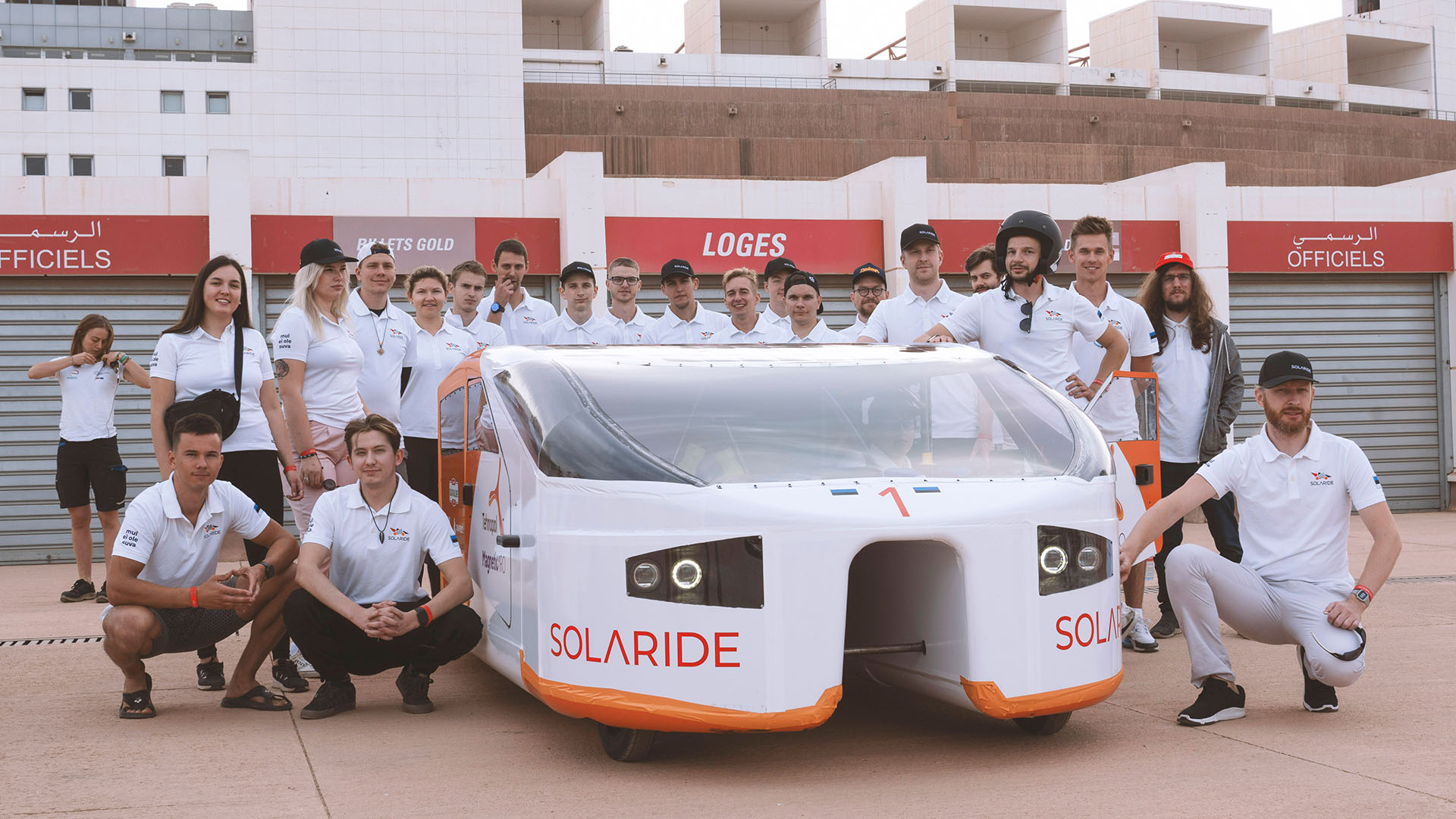Season 20/21
At the end of 2021, despite the corona crisis, the first solar car was built in the Baltic States by young Estonians and tested in a solar car competition in Morocco. Solaride won a special prize from the Dutch solar car manufacturer Lightyear for the most competitive spirit.
Solar Challenge Morocco 2021
Fire. Health problems. Difficult conditions. These are the words that sum up the first test race in faraway Morocco. A test race in the Atlas Mountains with a solar-powered car designed for Australia's flat roads put the team's technical and mental abilities to the test.
Solar Challenge Morocco 2021
The solar car race in Morocco was created in just a few months through a partnership between European teams and Classic Events to replace the Bridgestone World Solar Challenge 2021, which was canceled due to the corona crisis.
We have gained valuable experience from the Moroccan test event, which will help us prepare for the World Solar Car Championship in Australia.
We have gained valuable experience from the Moroccan test event, which will help us prepare for the World Solar Car Championship in Australia.
- 5 days
- 5 stages
- 2500 km
- 2 days sleeping in desert
- desert heat and sandstorms
- potholes and sometimes non-existent roads
We develop a solar car to educate people
Specifications:
- Max speed: 98 km/h
- Avarage speed: 80 km/h
- Weight: 650 kg
- Dimensions: 5 x 1,8 x 1,2 m
- Seats: 4
- Load capacity: 4x80 kg
- Power: 3,6 kW
- Energy consumption: 4 kW
- Power from solar panels: 1,2 kWh
- Air resistance coefficient: 0,2 Cd
- Range: 750+ km
A solar-powered solar car uses 5x less energy on the road than a conventional car.
The solar car is designed to travel 3,000 kilometers from the north coast of Australia to the south coast of Australia on two charges.
Approximately 15 different concepts of the solar car were in development before the final version.
It took about 6 months and about 10 000 hours of work to build the car. The car was physically built by ~25 young engineers and a number of other team members from marketers to logisticians.
Electronics
- battery packs of 6 recycled Tesla battery modules
- solar panel with an area of 4.82 m2 with 24% efficiency Maxeon elements
- on the rear axle, two Marand 1.8 W electric motors
- on-board electronics driven by self-developed printed circuit boards
- self-developed ECU
Mechanics
- carbon fiber body
- carbon steel tubular frame
- suspension: Double control arms/trailing arm
- self-designed aluminum wheels
- Bridgestone Ecopia 95/80R16 tires
- carbon fiber seats weighing ~ 1 kg each
Software
- a special software optimal speed calculator has been developed for the car, which takes into account the surrounding conditions and adds a driving range of approximately 7% to the car.














_medium.jpg)
